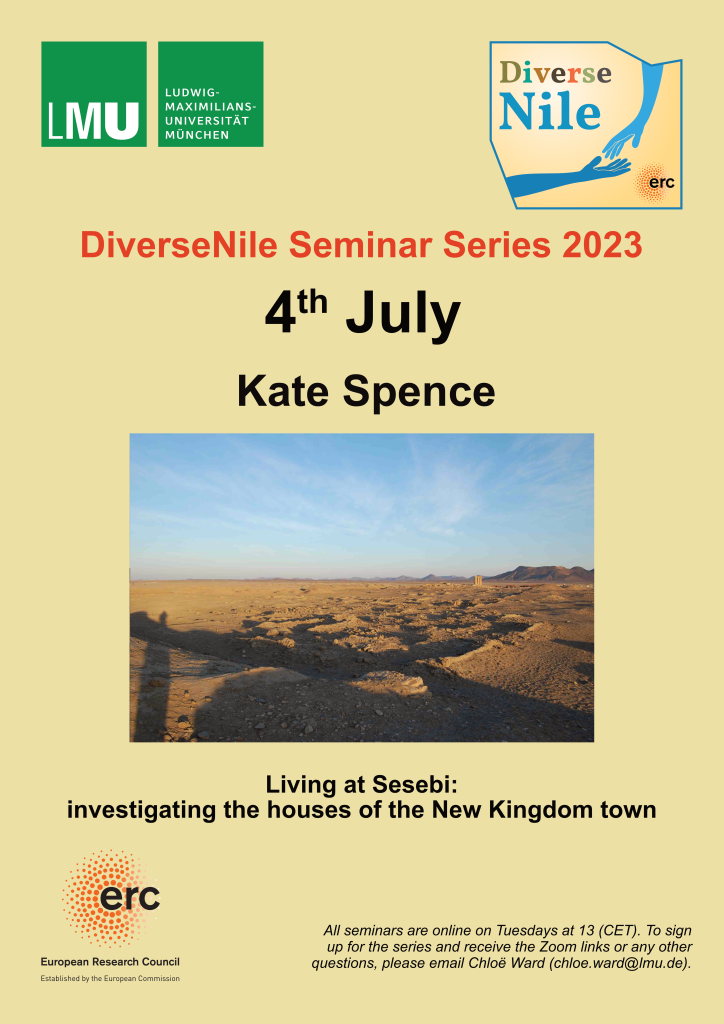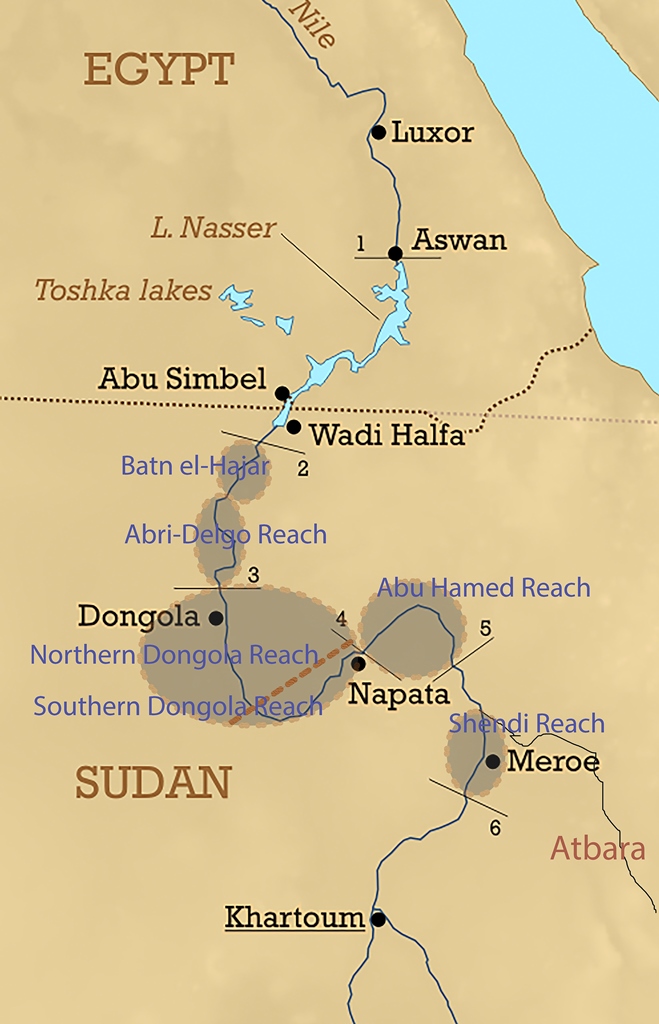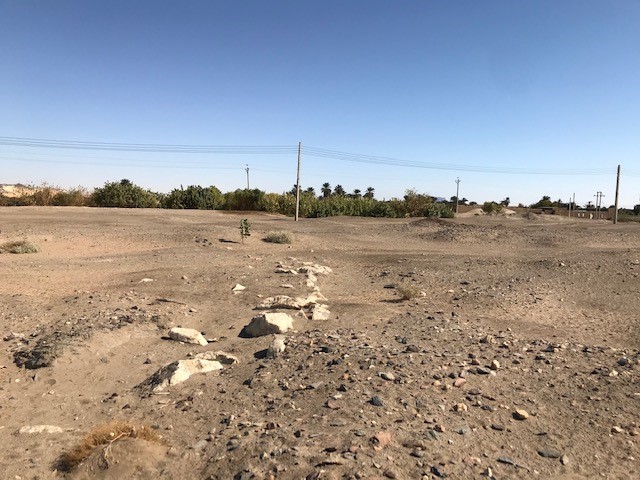The next lecture in our DiverseNile Seminar Series 2023 is coming up: on Tuesday, July 4, Kate Spence (University of Cambridge) will be talking about her research in the temple town of Sesebi – “Living at Sesebi: investigating the houses of the New Kingdom town”.

Kate is an internationally well-recognised expert on New Kingdom urban sites and especially house architecture in Amarna and Sesebi. She has published seminal works on the topic and, in my opinion, one of her publications on the 3D form of Amarna houses (Spence 2004) is especially remarkable and extremely useful to be discussed with students in classes on Egyptian domestic architecture.
I am especially delighted that Kate will be giving this talk about lived experiences in New Kingdom houses at Sesebi for several reasons. First, because the site of Sesebi is a fantastic parallel for Sai Island and second, it has always struck me as an especially intriguing site with huge potential (especially for understanding settlement patterns in New Kingdom Nubia). Thus, thirdly, it is not only a great topic for the DiverseNile Seminar Series, but also of much relevance for domestic architecture in the Attab to Ferka region and our own research.
Kate’s recent fieldwork project at Sesebi (co-directed with Pamela Rose) reflects the new boom in urban archaeology in Upper Nubia since the 2000s, with an increase in archaeological fieldwork at sites like Amara West,Tombos, Sai, Dukki Gel and of course Sesebi.
The new work at Sesebi started in 2008 and concentrates on a re-assessment of the work by the Egypt Exploration Society in the 1930s. The most important result of this new mission is that structures and material remains, especially pottery, have been found which pre-date the reign of Akhenaten – the king who is normally associated with the site. It is very likely that Sesebi was already founded at the very beginning of the 18th Dynasty (Spence and Rose 2009, 39, 42; Rose 2017; Spence 2017) – maybe as early as Sai Island.
Join us next Tuesday at the DiverseNile Seminar and learn more about living at New Kingdom Sesebi through Kate Spence’s promising lecture!
References
Rose 2017 = Rose, P., Sesebi: Ceramics, chronology and society, in: Neal Spencer, Anna Stevens and Michaela Binder (eds.), Nubia in the New Kingdom. Lived experience, pharaonic control and indigenous traditions, British Museum Publications on Egypt and Sudan 3, Leuven 2017, 465–473.
Spence 2004 = Spence K., The three-dimensional form of the Amarna house, Journal of Egyptian Archaeology 90, 2004, 123-152.
Spence 2017 = Spence, K., Sesebi before Akhenaten, in: Neal Spencer, Anna Stevens and Michaela Binder (eds.), Nubia in the New Kingdom. Lived experience, pharaonic control and indigenous traditions, British Museum Publications on Egypt and Sudan 3, Leuven 2017, 449–463.
Spence and Rose 2009 = Spence, K. and Rose, P., New fieldwork at Sesebi, Egyptian Archaeology 35, 2009, 21–24.






